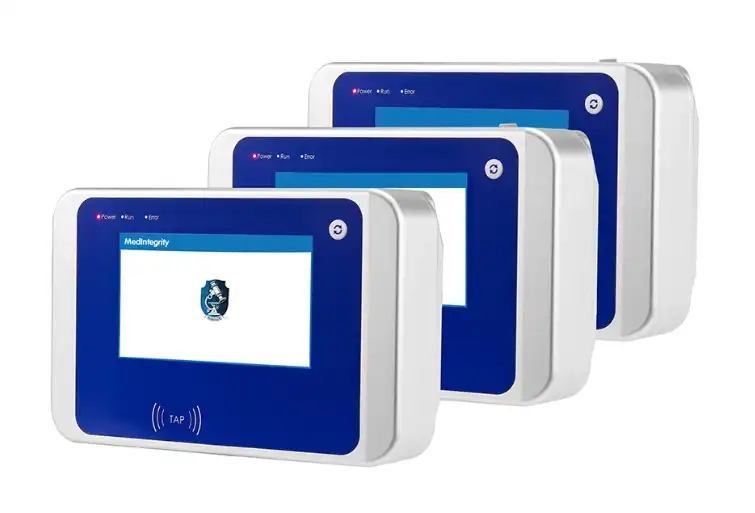Understanding Glove Testing Standards in Drug Manufacturing Processes
Understanding Glove Testing Standards in Drug Manufacturing Processes

Glove integrity testing is essential in pharmaceutical production. It ensures cleanliness, adherence to rules, and the safety of products. This guide explains the vital role of glove checks, the techniques used, important industry rules, difficulties encountered, and how modern solutions help meet these needs.
Why Is Glove Integrity Testing Critical in Drug Manufacturing?
In the strictly controlled field of medicine production, keeping things germ-free is absolutely necessary. Checking gloves for flaws acts as a primary shield against pollution. It makes sure both product excellence and worker protection are maintained. Even the tiniest imperfection in gloves can ruin large quantities of medicine. This can lead to expensive withdrawals and legal consequences. Here, we examine why thorough glove examination is crucial in medicine creation. It stops contamination and follows worldwide regulations.
The Importance of Contamination Prevention
In medicine making, keeping a germ-free space is extremely important. Gloves serve as a shield between workers and the clean production area. They block harmful organisms, tiny particles, and other pollutants. A small break in glove quality can affect the cleanliness of the medicine. This might create health dangers for consumers. Pollution can cause product callbacks, money problems, and harm to a brand’s image. So, confirming glove quality is not just about following laws. It is also a key part of making sure medicines are made properly.
Ensuring Product Safety and Compliance
Medicine safety is the main focus of production processes. Groups like the FDA set strict rules to guarantee drugs are made in clean conditions. Glove checks help follow these rules by showing that gloves used in sterile rooms have no issues like tiny holes or rips. This checking process assists makers in keeping steady product quality. It also helps avoid fines or closures due to rule violations.
Protecting Personnel and Maintaining Sterility
While gloves mainly guard products from pollution, they also keep workers safe when handling dangerous materials during medicine production. Gaps in glove quality can expose employees to toxic substances. Regular testing confirms that gloves give enough safety for both people and the clean environment.
How Are Gloves Tested for Integrity in Drug Manufacturing?
Making sure gloves are flawless needs dependable and uniform checking techniques. From air pressure tests to water examinations, producers use different ways to find even invisible breaks. The selection of method, how often tests happen, and steady procedures all matter greatly in staying within rules. Here, we look at the most frequent glove checking approaches and the best ways to use them in medicine-making settings.
Common Methods Used for Glove Testing
From air pressure checks to water tests, this part explains the most popular glove examination techniques. Understand how each method finds problems, their levels of precision, and where they work best.
Pressure Decay Method
The air pressure technique is among the most used ways to check gloves. In this approach, gloves are filled with air, and the pressure is watched carefully. If the pressure goes down, it means there is a hole. This way is very exact and can spot even extremely small flaws.
Water Leak Test Method
The water test includes filling gloves with water and looking for leaks over time. While simple and cheap, it is not as precise as the air pressure method. It is often used for basic checks or extra confirmation.
Frequency and Timing of Glove Tests
How often gloves are checked depends on many things. These include the kind of production, legal needs, and risk evaluations. Usually, gloves are examined before use, after certain production stages, or if damage is suspected. Regular tests help follow cleanliness rules and lower risks from unseen flaws.
What Are the Key Glove Testing Standards in Drug Manufacturing?
Following global rules is basic in glove checks for medicine making. Regulations like ISO 14644 for sterile rooms and ASTM rules for safety gloves give clear quality marks. These systems create sameness across the field while helping producers meet FDA demands. This part describes the main rules controlling glove quality and their effects on medicine production.
Overview of Glove Integrity Testing Requirements
Glove examination needs are explained by different worldwide standards. These provide directions on allowed flaw levels, checking ways, and record-keeping habits.
International Standards Governing Glove Testing
Learn about ISO 14644 for sterile room glove matching and ASTM rules for material strength. This section explains how these systems guarantee glove dependability in medicine uses.
ISO 14644 and Its Role in Cleanroom Environments
ISO 14644 gives directions for sterile rooms in medicine making. It lists needs for air cleanliness levels and watching steps to keep areas germ-free. Gloves used there must meet tough quality standards to match ISO 14644.
ASTM Standards for Protective Gloves
ASTM rules give exact details for safety gloves in many fields, including medicine. These cover things like what materials are used, strength, hole resistance, and breathability. Following ASTM rules makes sure gloves meet the high-quality needs for drug production.
What Challenges Exist in Meeting Glove Testing Standards?
Even though glove checks are clearly important, medicine makers face several problems in staying within rules. Differences in checking steps, tool limits, and budget issues can all reduce effectiveness. Solving these issues needs uniform methods, new tools, and smart resource use. Here, we study the main barriers and real answers for keeping steady glove quality.
Addressing Variability in Testing Procedures
One big issue in glove checks is differences in methods across places or workers. Inconsistent use of checking ways can cause wrong results or missed flaws. Making methods the same through training and clear records can help fix this problem.
Overcoming Equipment Limitations and Maintenance Issues
Checking tools must be adjusted and cared for often to give right results. However, tool problems or damage can make tests unreliable. Buying good-quality checking machines and setting up regular care plans are key steps to solve these troubles.
Managing Costs While Ensuring Compliance
Glove checks can use many resources because they need special tools, skilled workers, and frequent tests. Balancing budgets with rule needs stays a constant challenge for makers trying to keep profits without lowering quality or safety standards.
How Can MedIntegrity Support Your Glove Testing Needs?

For medicine makers wanting dependable glove check answers, MedIntegrity provides modern tools and expert knowledge. Their high-tech testers, rule-following designs, and focus on quality make them a reliable partner in clean production. This part shows how MedIntegrity’s answers solve industry problems while simplifying compliance and improving work speed.
Introduction to MedIntegrity as a Trusted Supplier
Meet MedIntegrity—a top name in glove check technology. See how their answers make following rules easier with modern automation and designs that match regulations.
Expertise in Providing Advanced Glove Integrity Testers
MedIntegrity is a leader in glove check solutions made for strict medicine-making needs. Their knowledge comes from years of experience, ensuring their products meet and beat industry marks. By using the newest technology, MedIntegrity offers advanced glove testers that find even microscopic flaws. These systems are made for accuracy and steadiness, making them vital for medicine makers keeping cleanliness and product safety.
Commitment to Quality, Reliability, and Compliance
MedIntegrity’s focus on quality is clear in their following of global rules like ISO 14644 and ASTM guides. These rules provide the base for steady and dependable glove checks. Their tools not only meet legal needs but also go through strict testing to promise uniform performance. By picking MedIntegrity, makers can be sure they are choosing reliable answers that help follow FDA rules.
MedIntegrity also strongly supports customers, offering training and materials for proper tool use. This full approach helps reduce differences in checking methods, a common industry issue. Also, their systems are easy to use, making them simpler for workers while keeping high accuracy.
Conclusion
MedIntegrity is a trusted partner for medicine makers needing reliable glove check solutions. Their modern tools, quality focus, and rule following make them a perfect choice for keeping cleanliness and safety in medicine production.
FAQs on Glove Testing Standards in Drug Manufacturing Processes
What Are the Common Causes of Glove Failures During Testing?
Glove failures during checks can happen for many reasons. These include production flaws like small holes or weak edges. Bad storage, such as very hot or damp conditions, can weaken glove material. Rough handling during use or checks can also cause rips. Frequent looks and proper care methods are important to reduce these risks.
How Often Should Gloves Be Tested for Integrity?
How frequently gloves are checked depends on many factors. These include the production setting, legal needs, and risk reviews. Normally, gloves are tested before use, after certain production runs, or if damage is possible. Regular tests help follow cleanliness rules and reduce chances of unseen problems.
Can Automated Systems Improve the Accuracy of Glove Integrity Tests?
Automatic tools greatly help make glove checks more precise and faster. These systems remove human mistakes by making testing methods uniform and giving steady results. Features like instant watching and data recording improve tracking and paperwork. By choosing automatic tools like those from MedIntegrity, makers can get better precision while making quality checks smoother.







